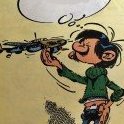-
Posts
1,592 -
Joined
-
Last visited
-
Days Won
1
elger last won the day on August 20
elger had the most liked content!


5.9k

elger replied to elger's topic in Ready for Inspection - Aircraft





elger replied to adey m's topic in Ready for Inspection - Aircraft
